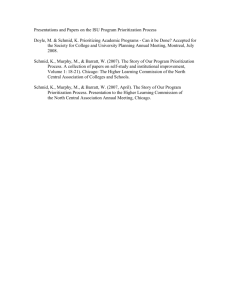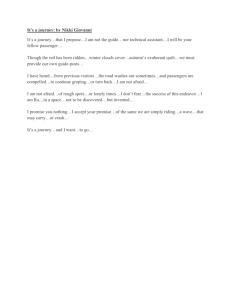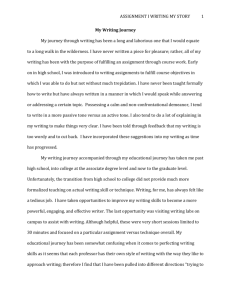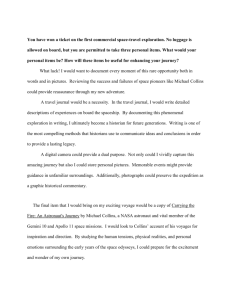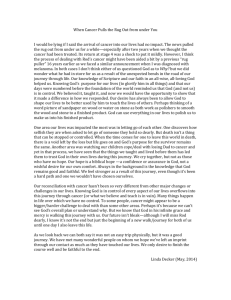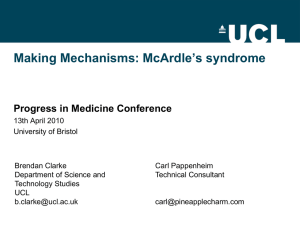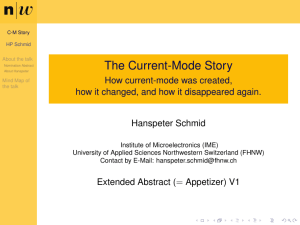The Water`s Journey
advertisement
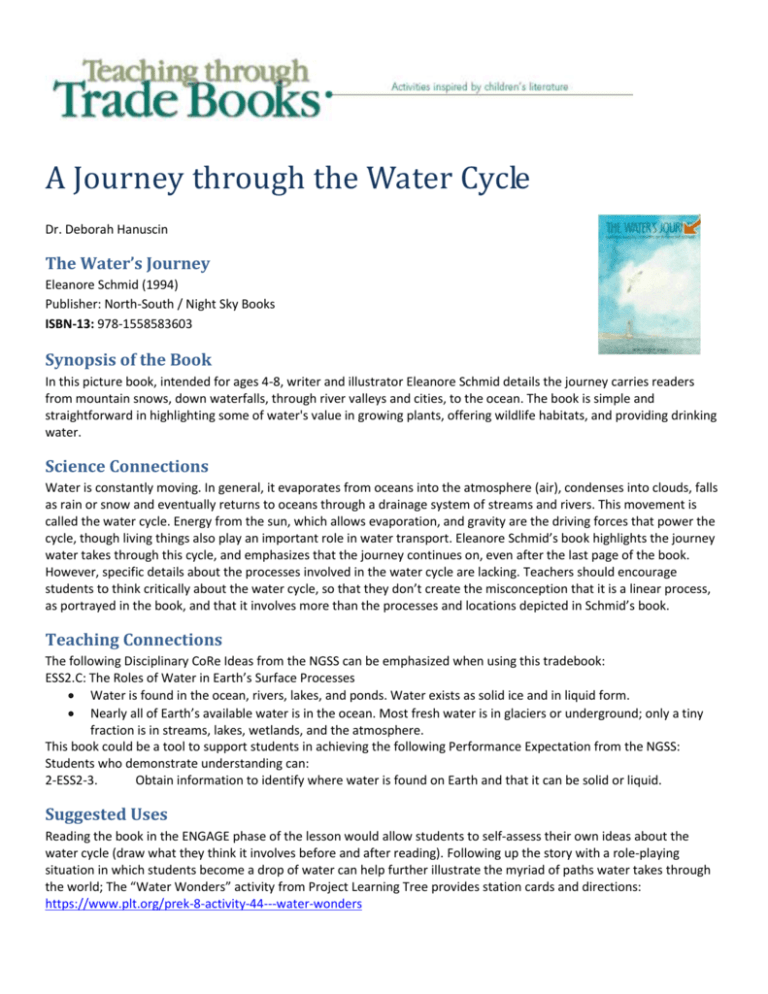
A Journey through the Water Cycle Dr. Deborah Hanuscin The Water’s Journey Eleanore Schmid (1994) Publisher: North-South / Night Sky Books ISBN-13: 978-1558583603 Synopsis of the Book In this picture book, intended for ages 4-8, writer and illustrator Eleanore Schmid details the journey carries readers from mountain snows, down waterfalls, through river valleys and cities, to the ocean. The book is simple and straightforward in highlighting some of water's value in growing plants, offering wildlife habitats, and providing drinking water. Science Connections Water is constantly moving. In general, it evaporates from oceans into the atmosphere (air), condenses into clouds, falls as rain or snow and eventually returns to oceans through a drainage system of streams and rivers. This movement is called the water cycle. Energy from the sun, which allows evaporation, and gravity are the driving forces that power the cycle, though living things also play an important role in water transport. Eleanore Schmid’s book highlights the journey water takes through this cycle, and emphasizes that the journey continues on, even after the last page of the book. However, specific details about the processes involved in the water cycle are lacking. Teachers should encourage students to think critically about the water cycle, so that they don’t create the misconception that it is a linear process, as portrayed in the book, and that it involves more than the processes and locations depicted in Schmid’s book. Teaching Connections The following Disciplinary CoRe Ideas from the NGSS can be emphasized when using this tradebook: ESS2.C: The Roles of Water in Earth’s Surface Processes Water is found in the ocean, rivers, lakes, and ponds. Water exists as solid ice and in liquid form. Nearly all of Earth’s available water is in the ocean. Most fresh water is in glaciers or underground; only a tiny fraction is in streams, lakes, wetlands, and the atmosphere. This book could be a tool to support students in achieving the following Performance Expectation from the NGSS: Students who demonstrate understanding can: 2-ESS2-3. Obtain information to identify where water is found on Earth and that it can be solid or liquid. Suggested Uses Reading the book in the ENGAGE phase of the lesson would allow students to self-assess their own ideas about the water cycle (draw what they think it involves before and after reading). Following up the story with a role-playing situation in which students become a drop of water can help further illustrate the myriad of paths water takes through the world; The “Water Wonders” activity from Project Learning Tree provides station cards and directions: https://www.plt.org/prek-8-activity-44---water-wonders

